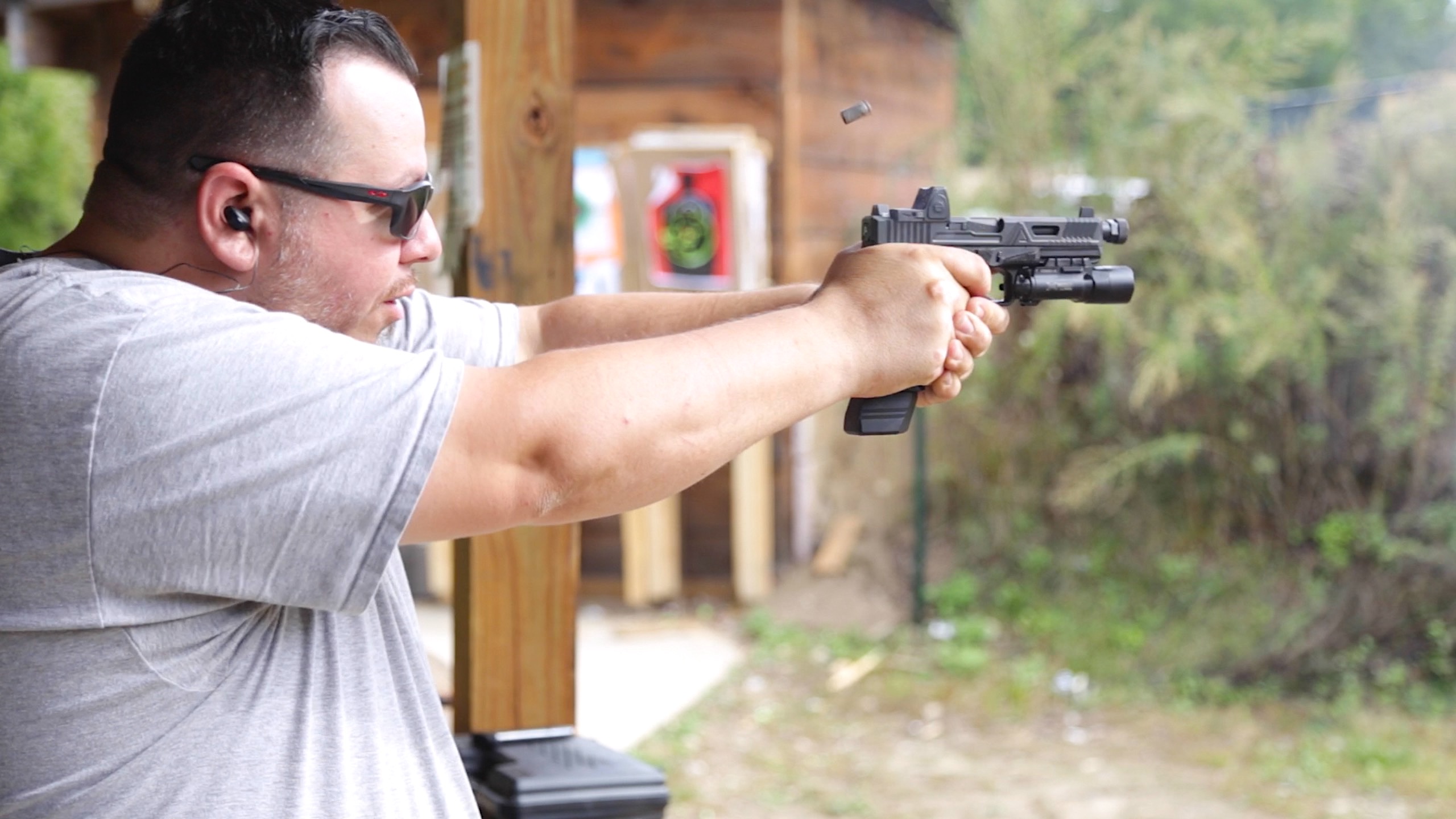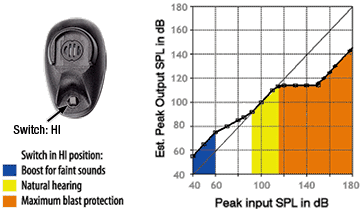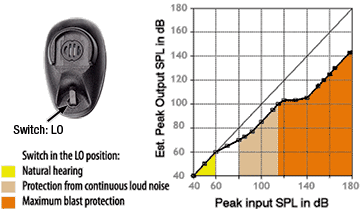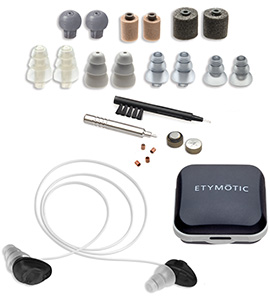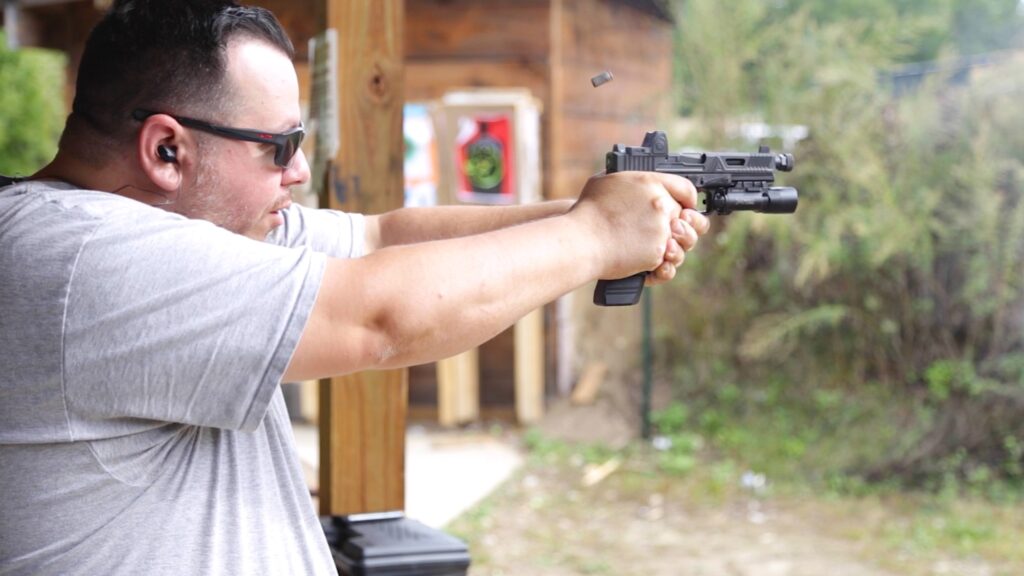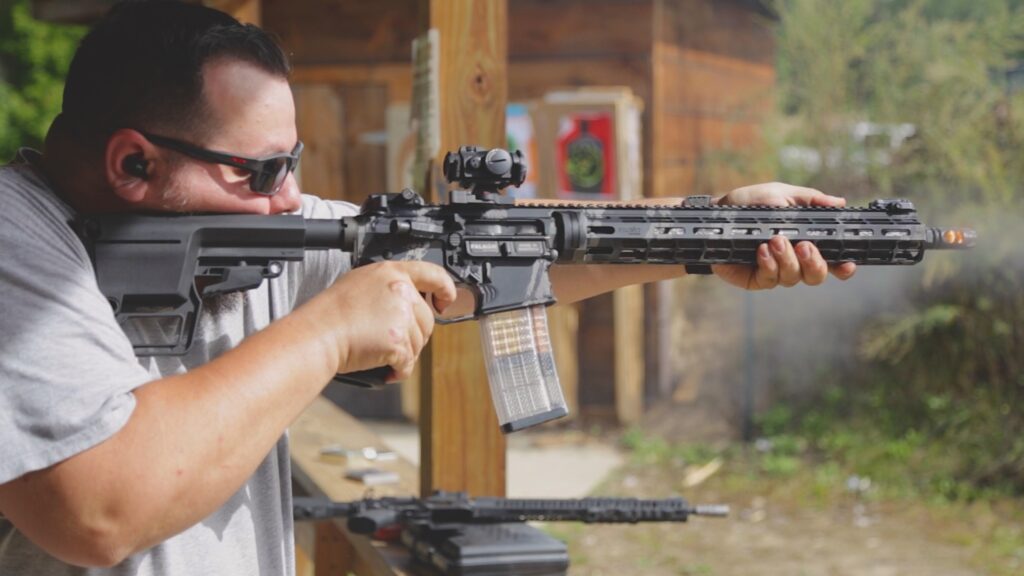I have seen Ear protection cost as little as a couple bucks all the way up to thousands of dollars. As we all know, while shooting is fun, we would like to be able to use our hearing again in the future. While enjoying firearms isn’t going to blow your eardrums in one shot, it is something that gets destroyed very easily over time.
With protection of the longevity of your hearing in mind, many of the options available on the market today are generally left to a combination of budget and personal preference. Pushing personal preference aside for just a minute, lets talk about popularity. By far from what we have seen from others within the industry as well as your average Joe/Jane shooter is the inexpensive Electronic EarPro commonly available at Amazon, Walmart and local hunting/gun shops. They work well, fairly ruggedized and easy to maintain/replace batteries. What you also commonly see is people still doubling up on this ear protection with the addition of foam or in-ear inserts. But why?
One of the main issues with the over ear protection, electronic or otherwise is from the shooting positions and butt stock associated with proper shooting form. What ends up happening more often than anyone would care to admit is that the ear pro gets lifted, shifted or moved when you go to acquire a proper cheek weld. When that happens you are promptly greeted with a loud “crack” and a persistent ring for a short time from not having the shot muffled. Another case for making Suppressors a non-NFA item and standard equipment available to all citizens, but that is a write up for another time. So what if you want the best of both worlds? What if you want simple, in-ear protection with the benefits of electronic ear protection that only attenuates the harmful sounds and still lets you communicate? Or even hear amplified sound like when you are hunting and still protecting your ears? This is where the GSP•15 from Etymotic comes in.
A good rule of thumb with technology I have always told people since my retail days is “If you want technology smaller, it costs more money, period.” Now while I am sure there are some exceptions to this rule, it is a pretty fair assessment overall. The GSP•15 takes a lot of what the most popular and affordable over ear protection does and fits it right inside your ear canal. Not only that but it gives you two levels of adjustment based on what you need it for. There is a dual mode switch that is oh so tiny that switches the unit between Hi and Lo.
The Hi position on the switch is fantastic for what we are used to from most Electronic Ear Pro with the volume turned up. It enhances the slightest sounds and is great for just hanging around at the range or a class or while listening for brush and twigs to break while hunting. It is fairly clean and not too “digital sounding” with minimal hiss. Reduction in this mode is a -15dB reduction according to Etymotic and while it is probably close to that, it works about as good as a solid 5.56 suppressor in making shooting hearing safe without really sacrificing any normal hearing.
The Lo position is for when things get serious at about -25dB reduction. With a flick of the same switch, conveniently oriented in the direction of the main module itself in your ear, it is easily flicked with a gloved hand an with no need for fine motor skill. The Hi setting may require some fingernail usage to get underneath the tiny switch, but for Lo, its just a poke in the ear and you will probably turn the noise down quickly and easily just by getting close to it. it’s not loose or faulty, its just positioned in a really convenient fashion. This mode allows normal speech and communication to come through but is definitely attenuated by comparison to the Hi mode. The benefit though is, ALL levels are attenuated. So if there are machine guns, indoor shooting, classes or a full firing line…. the Lo position is where its at while still being a pretty decent electronic ear pro and allowing you to hear normal to high volume level talking.
The GSP•15 comes with several options for the insertion tips which I found to be very forward thinking on Etymotic’s part. When you are spending $300 on ear protection like this, it needs to be comfortable. There is no off switch (we will get to that in a minute) so prepare to wear them for the entire duration of your activity. Some people like soft foam, others like harder foam. Not all canals are the same size so you have different levels of thickness as well as silicon triple flange tips too. But let’s be honest, there is something… IN your ear… and you are aware of it, it doesn’t matter who makes what. Something in your ear is something in your ear and eventually you will want it out. Whether its for a break, or sweat, or any reason at all you want to take ear pro off from time to time because theres something in or on your ear. That is normal.
To help with that and not lose it the GSP•15 comes Left ear and Right ear tethered together with a thin and very lightweight cord so they can hang gingerly around your neck when not in use. While convenient, I found myself freaking out more often than not thinking I lost my ears because they really are SUPER light and fairly unnoticeable. A pretty good design for size, included accessories, comfort and adjustability. With the good comes the bad, or shall we just say, trade-offs. It is incredibly hard (read: expensive) to have a lot of these features without making some sacrifices.
I have worn the GSP•15’s from Etymotic for several months now. I have worn them outdoors alone, outdoors with several other shooters on a firing line. I have worn them indoors both for shooting as well as photography and video jobs with live fire from one and several shooters at a time. I wore them to two machine gun shoots, in both fair weather and rain and I must say they have faired exceptionally well and the Hi/Lo switch has been thoroughly tested. The only times I wish I had larger or additional EarPro was when I was in close proximity (it has happened several times over the past few months) to multiple full auto and large caliber volleys of fire going on. Full auto 7.62 and higher like .30cal and .50cal will rattle you no matter what so it perfectly acceptable to want more from any ear pro in my opinion. The trade-offs I have found in this time and usage are simple but may be deal-breakers for many.
Price for one. At $299 there are certain things one expects like an on/off switch and or a volume control. This has neither. The only part resembling a volume switch is the aforementioned Hi/Lo toggle. While at no point I felt I needed to adjust the volume it was very interesting to me that it did not have some sort of capability. The on/off switch though at first glance is a big deal, until you understand the battery life of the GSP•15.
The GSP•15 uses super tiny Zinc batteries. The same tiny ones that work with a lot of the smaller in-ear hearing aids. I mean TINY. BUT, it is also one of the most affordable and most widely available batteries thanks to the Hearing Aid industry. Plus and Minus because while accessibility and affordability of the batteries is a great thing, the frequency at which you need to replace them is astounding. The downfall of the Zinc size 10 battery is that, once it is exposed to oxygen, the countdown timer starts. Not when installed in the device, not when the device is on…. from the moment you peel off the protective battery sticker, the countdown begins. The longest I got these batteries to last was 3 days. As noted before, there is no “Off Switch.” So in order to not have a constant drain from the GSP•15’s, you have to remove the batteries from the hearing device when not in use just to get to 3 days.
So like I said, trade-offs have to happen and to make technology smaller it costs money. Etymotic I think made some great tradeoffs in consideration of size and battery versus life and common usage. Do you need an on off switch for such a limited life battery? Probably not. The batteries are also available in bulk and for not a lot of coin so all in all it’s not so bad. I was never uncomfortable with the lack of fine volume adjustment and 90% of the time I was fine with the simple Hi/Lo pass switch. The weight (or lack thereof) was a blessing and a curse. They were not that noticeable at all while wearing, and panic ensued when you weren’t wearing them because you are afraid they fell off your neck. After all this process I can tell you a few key things.
I have bought more batteries, because while this is not my main “go-to” hearing protection I really do enjoy not having to put on big ear pro from time to time. Especially in the hotter climates when you get that gross ear sweat from the ear cups on traditional hearing protection, it is nice to not have the backside of my ears smell like a set of hockey gloves. They work really great and have had no issues in many environments for me, so as I try to get into hunting for instance, I can absolutely see the value of having these. I keep them in my camera bag at all times both for range time and videos, as well as for when I am not shooting a gun, but a camera and don’t want the sweat as mentioned before.
Conclusion
If you need to pack light, want the convenience of smaller ear protection, or just want a more compact option then the Etymotic GSP•15 is a great choice. I still use over ear electronic ear protection, but I must say I like having the option and ability to occasionally use the smaller sized in-ear electronic. I tend to shoot far more than the average enthusiast so things like the battery life, cost to replace and cost of batteries is a bit different for me so take the review with a grain of salt. I would love to have MSA Sordins or Peltor ComTac III’s or even Howard Leight Impacts shrunk way down and fit into my ear with a super long battery life and functionality for only $50. But like I said earlier; “If you want technology smaller, it costs more money, period.” Overall, if it’s in your budget and/or you want the luxury of in-ear electronic hearing protection, the Etymotic GSP•15 is a great accessory to keep in the bag.



